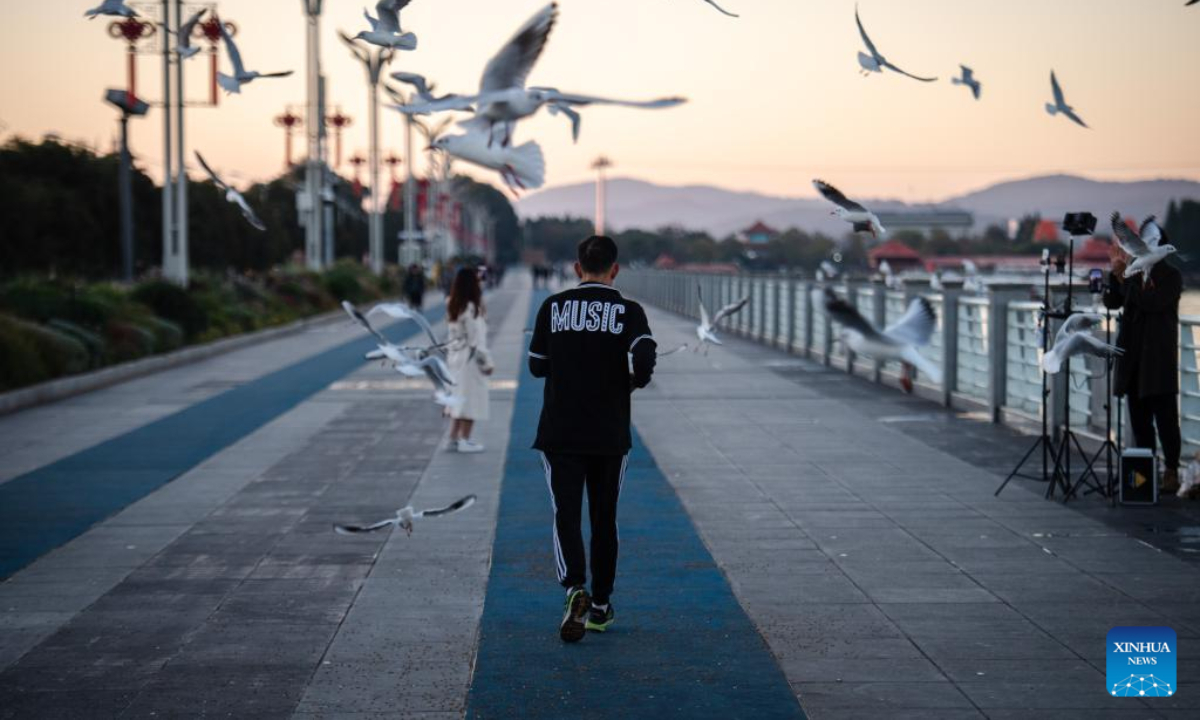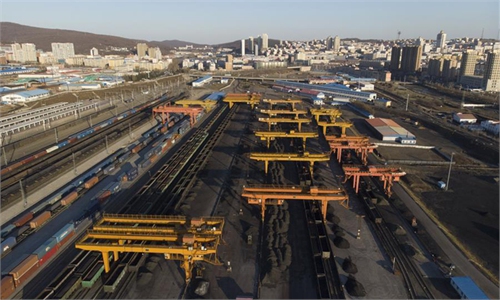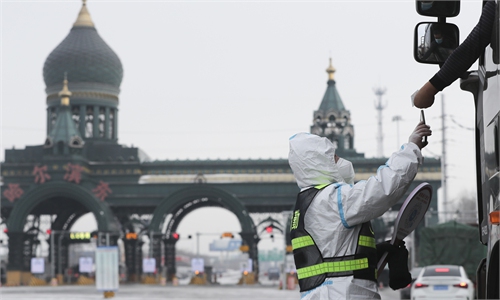Chinese border cities gradually return to usual bustle amid optimized COVID-19 response

People enjoy themselves by the bank of Dianchi Lake in Kunming, southwest China's Yunnan Province, Nov 17, 2022. Photo:Xinhua
Chinese border cities have gradually returned to their usual bustle after they have moved to scrap frequent nucleic acid testing and lifted travel restrictions for domestic cross-regional travelers, as the country's optimized COVID-19 response policy is being rolled out.The moves have been seen border regions including South China's Yunnan Province, the Guangxi Zhuang Autonomous Region and North China's Inner Mongolia Autonomous Region. Border cities are the forefront of guarding against imported cases. Due to the high risk of COVID-19 being spread by imported cases, those places have endured more and longer lockdowns and conducted nucleic acid testing more often.
"Come! Come!" Hearing a friend would like to visit Manzhouli, a major China-Russia trade hub in Inner Mongolia Autonomous Region, Ningning is delighted. "There is no need to worry about quarantine or testing requirements, Manzhouli certainly welcomes you!" she said. After the country rolled out the new COVID response measures last week, Manzhouli adopted the same policies, which facilitate cross-regional travel and local tourism.
The same policy goes for Ruili, a city in Yunnan bordering Myanmar. "It is so delightful to see Ruili revive. There is a lot of hope, as the COVID-19 response is optimized. I look forward to opening our gate soon," a jade businessman surnamed Jiang in Ruili told the Global Times.
Jiang said he has witnessed many local shops that have opened in recent days, and heard that some local jade markets that have been closed for about three years also plan to restart their business. At last people can go and come without any requirements for testing or health codes, or other documents.
"We should give full play to the advantages of port customs and trade, and steadily expand the opening of ports," Wei Gang, the governor of Dehong Prefecture in Yunnan Province, said in his recent visit to Ruili.
But some have opted not to open their businesses so quickly as they are afraid of getting infected, and another reason is that there are still not many customers coming to Ruili. Local jewelry dealers have shifted their businesses online, Jiang told the Global Times. In the past three years, Ruili has endured at least four lockdowns that triggered business and public transport suspensions, along with frequent mass testing.
Besides the removal of regular nucleic acid testing in border areas covering eight cities, including Jingxi and Dongxing, the Guangxi regional government optimized inbound vehicle and cargo management among border cities.
Inbound vehicles and goods are being managed the same as domestic logistics vehicles and goods after leaving the port area. Inbound vehicles and goods are allowed to enter urban areas of border cities, and border officials shouldn't suspend the import of cold chain goods.
"That's really a relief! The move greatly improves customs clearance efficiency, lowers the costs of importers and boosts their confidence to strike more deals," Long, who works at a shipping agency in Pingxiang city of Guangxi, told the Global Times.
Long said that general cargo entering port cities of Guangxi no longer needs to be disinfected in centralized warehouses, which saves at least 10,000 yuan ($1,436) per container. Fruits from Southeast Asian countries are the main goods entering and exiting Guangxi ports, Long said.
Since December 7, the number of inbound and outbound vehicles in Pingxiang has reached 980 per day, media reported.
In order to further strike a balance between anti-epidemic work and social and economic development, China further adjusted and optimized its COVID-19 response by releasing 10 new measures on December 7. The changes include allowing asymptomatic carriers and mild patients and those who meet certain requirements to quarantine at home, and lifting testing and health code requirements for domestic cross-regional travelers.


